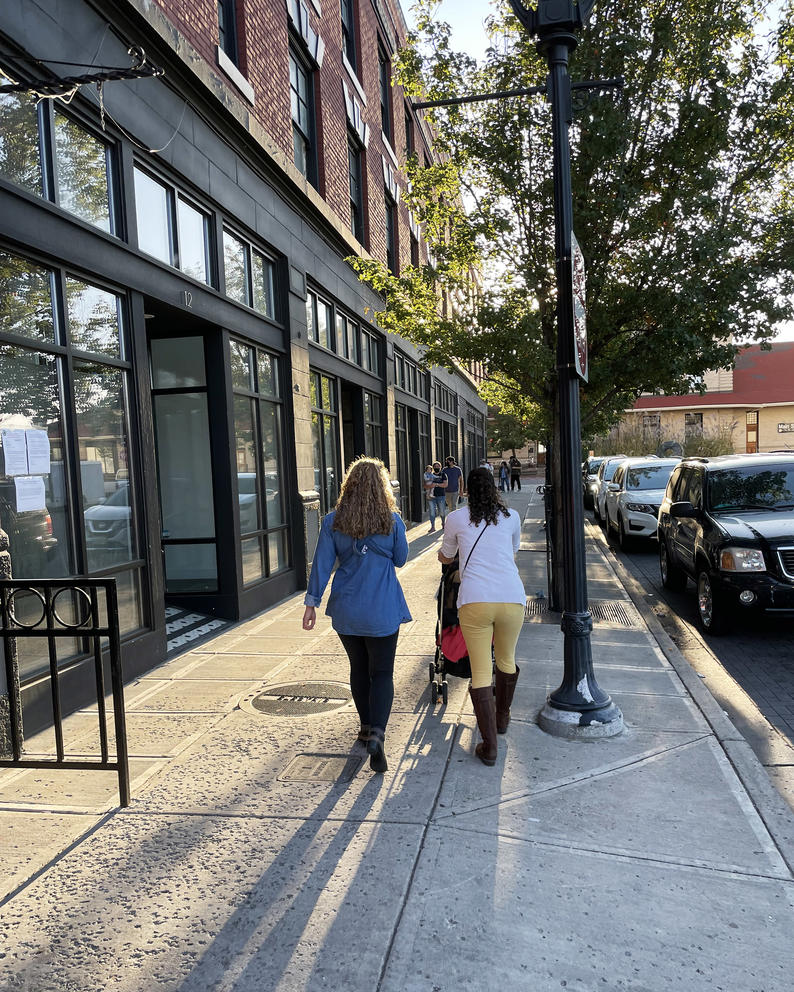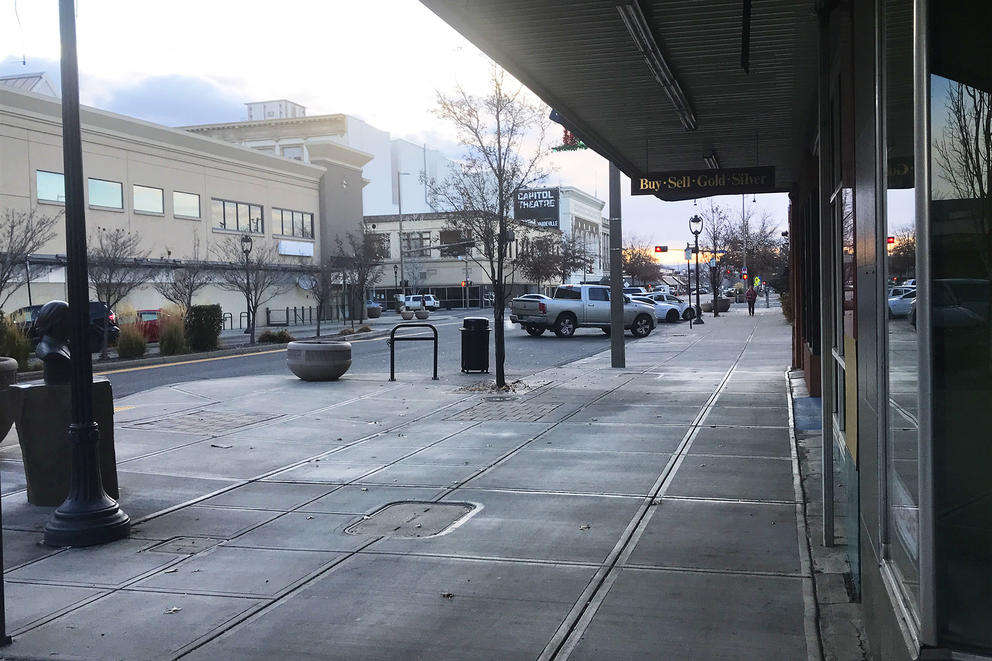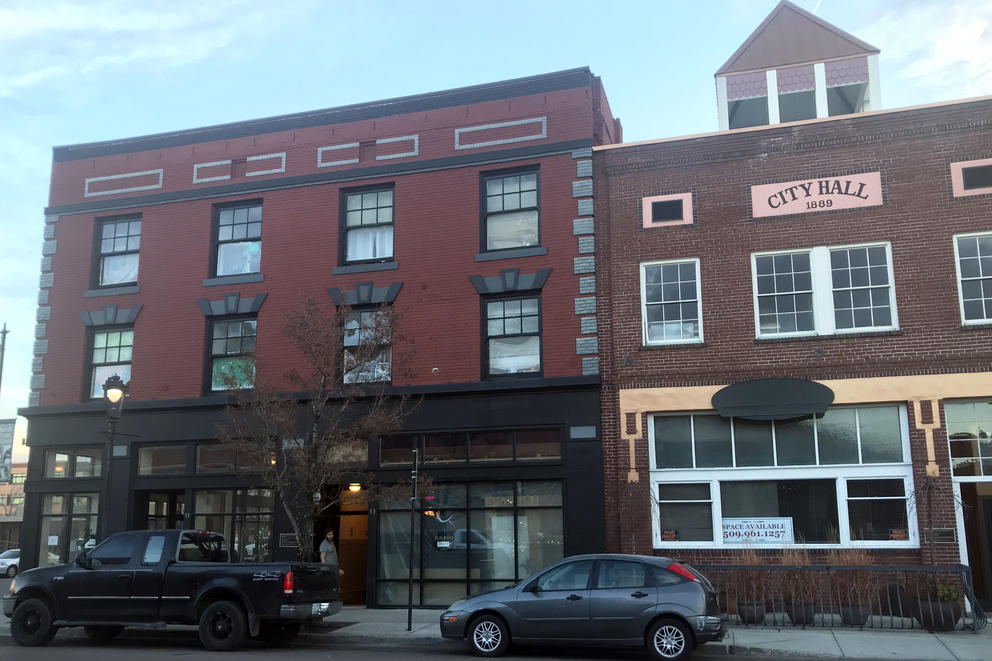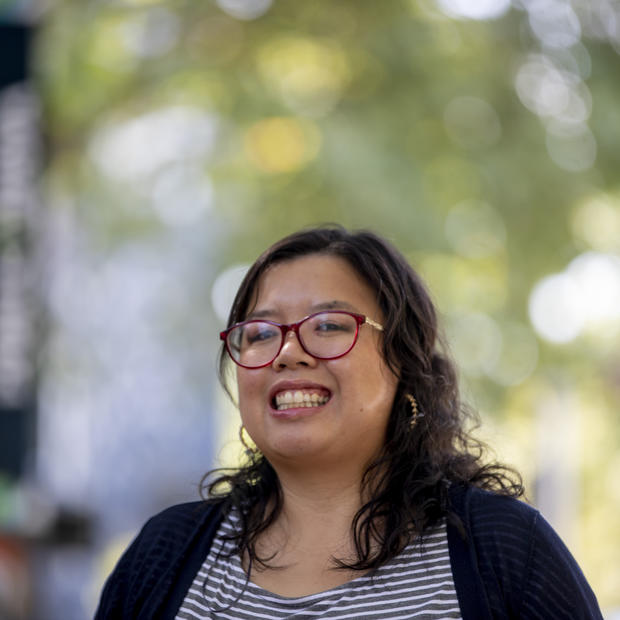But the loss of a heavily used parking lot — the proposed plaza site — was a turnoff for many voters.
Business owners feared a drop in customer traffic, and residents disliked seeing convenient parking taken away.
In Yakima, residents like to drive from place to place, even within the downtown core. Persuading people to get out of their cars, despite the apparent physical and environmental benefits, is a heavy lift.
“It’s considered a bad thing if you have to park more than 30 feet from the front door of the place you’re going,” said Nathan Poel, a local architect.
Walkability scores and urbanist ideas like the “15-minute city” are more commonly associated with places like Seattle, a member of the C40 Cities, a global coalition focused on climate change. The coalition outlined the 15-minute city concept in its 2020 report, “Agenda for a Green and Just Recovery.”
But that doesn’t mean the people who live in Central Washington are not concerned about their carbon footprint or are unaware of the threat of global climate change. They would just prefer to improve the environment without getting out of their cars.
That hasn’t stopped Poel — and other like-minded Yakima residents — from pushing forward on projects that seek to transform Yakima’s drive-and-park culture at least in a small way.
The Yakima Mile Loop, a proposed walkable development district within downtown Yakima, directly challenges the city’s car culture.
A car drives past a retail building that houses Essencia Artisan Bakery and Ron’s Coin and Collectibles on North Third Street in Yakima on Dec. 9, 2021. The bakery and collectible shop are among the businesses located within the Yakima Mile Loop, a proposed district in downtown Yakima. (Mai Hoang/Crosscut)
Within the Mile Loop’s boundaries are popular restaurants, performance venues and condos. But the area also has several building and property vacancies that could be redeveloped into apartments, shops, galleries and restaurants.
In October, Poel and others behind the effort introduced their vision through a weekend event. Sandwich boards and signage encouraged visitors to walk the milelong boundary and visit businesses. The weekend also featured a bike race and a pop-up ice cream shop.
“It gave us a huge wealth of information and learning about, ‘How do people feel about these places? What does it feel like as a group to walk from Point A to Point B? What can we do to make it a more interesting experience?’” Poel said.
Creating an enjoyable experience is crucial to luring people out of their cars to walk, bike and use alternative forms of transportation, not just on the Yakima Mile Loop but elsewhere downtown and in the city, he said.
“The [Yakima Mile Loop] is a way of breaking that down,” he said. “You’re saying, ‘OK, well, you're not gonna walk all the way down Yakima Avenue to the end of what's considered downtown, but you can do it here.’”
Stumbling into cohesion
The Mile Loop concept emerged serendipitously. Poel was searching for an office location for his company, Inversion Design Build, an architecture firm seeking to design affordable, sustainable and resilient homes.
His search led him to a vacant property at the corner of Chestnut Avenue and Front Street.
While the site was in downtown Yakima, one wouldn’t know that when looking outward from the property, Poel said.
Poel knew he had found both the right spot for his firm’s office and an opportunity to go much bigger — a chance to redefine the place around it.
Taking the first step in that process was as simple as looking at a map. Poel quickly identified the one-mile boundary of a potential downtown subdistrict.
Along with the vacant property he would acquire, the Yakima Mile Loop is home to some popular downtown destinations: The Capitol Theatre is the home base for the Yakima Symphony Orchestra and where residents can catch Broadway musicals on tour. Crafted restaurant is often full of people eager to try its dishes, which are made with local products. Essencia Artisan Bakery is a go-to lunch spot for downtown workers. Collab Coffee has developed its following through its robust arts programming. And Yakima Maker Space, a nonprofit that Poel co-founded, is a gathering spot for local creatives.
“It’s four corners. It’s two blocks by three blocks with six blocks in the middle,” Poel said. “We can use this as a starting point to talk about how you interact with downtown.”
For three decades, through the early 2000s, the primary way Yakima area residents interacted with downtown was through the Yakima Mall. The mall was home to several large department stores, and Nordstrom was across the street.
But the mall started to empty as retailers moved to the suburbs — the Bon Marché (now Macy’s) went to the Valley Mall in nearby Union Gap — where there was more space and more parking. Other retailers, including Nordstrom and J.C. Penney, closed.
When the Yakima Mall officially closed in 2003, many of its spaces were already empty.
Since then, city officials, nonprofits and developers have tried numerous ways to bring people back to the downtown core.
The former Yakima Mall owners, the Morrier family, redeveloped several parts of the mall into hotels, condominiums and offices. Several buildings, including the former Nordstrom department store, were redeveloped, providing new office and retail space. Restaurants and breweries opened and remained downtown as they gained a loyal customer base. A former Christian Science church is now The Seasons Performance Hall, a popular music and event venue.
Thanks to a city property tax deferment program, several organizations began redeveloping the upper floors of various downtown buildings into apartments and condominiums in the late 2000s. Among the projects completed was The Lofts, a luxury condo complex on the upper floors of the former Bon Marché space.
Annual and seasonal events such as the Downtown Yakima Farmers Market, a summer concert series and the Fresh Hop Ale Festival have brought thousands back to downtown.
But finding something like the Yakima Mall to tie the different elements of the downtown core together has been elusive.
As a result, while there is much redevelopment downtown, there's still plenty of vacant spaces, too. When events aren't drawing residents in, the downtown core can feel all but void of people. That contributes to many residents' feeling that downtown Yakima is unsafe, creating a vicious circle.
The Yakima Mile Loop is a microcosm of the potential and problems of the greater downtown area, Poel said.
During a recent walk around the Yakima Mile Loop, Poel saw the contrast between a well-lit restaurant full of activity and the darkness of the vacant spaces just a block away.
While he was not afraid of being downtown in the dark, he understands why some might be while walking around poorly lit and vacant areas of the Yakima Mile Loop.
“How do we become that connective tissue so that they feel like they’re in one location rather than a bunch of tiny little ones scattered around?” Poel said.
On North Third Street in Yakima, residents are accustomed to parking in front of their destination, even in downtown. The group behind the Yakima Mile Loop, a proposed district within downtown, hopes to promote more pedestrian activity. “So the [Yakima Mile Loop] is a way of breaking that down,” said Nathan Poel, one of the people involved with the effort. “You’re saying, ‘OK, well, you're not gonna walk all the way down Yakima Avenue to the end of what's considered downtown, but you can do it here.” (Mai Hoang/Crosscut)
Sustainable by design
Environmental sustainability is top of mind for Poel, both for the Yakima Mile Loop district and the property that led him to the concept in the first place.
And increasingly, integrating environmental best practices is becoming more important to those involved with “placemaking” — a design process aimed at creating desired places for people to work and live. It includes practices that encourage environmental sustainability and a sense that people belong.
Many public spaces seek to be pedestrian-friendly. But most times, the aim is accessibility and less about environmental sustainability, said Annette Roth, community development manager of the Washington State Arts Commission. The commission oversees certification for the state’s creative districts, defined as an area that serves as a community center for economic and cultural activity.
Communities with thriving cultural and economic centers enable residents to get entertainment, cultural and retail needs met at home rather than having to make a trip to a neighboring community, Roth said.
“For example, if you’re in Olympia — they have a creative district — they don’t have to go to Seattle to see world-class arts and culture,” she said.
Still, there are examples of creative districts and other public spaces factoring in environmental sustainability in the placemaking process.
“There have been several threads that converged on placemaking that speak more directly to [environmental] sustainability,” said Brian Muller, director of the Community Engagement, Design and Research Center at the University of Colorado Boulder.
One example is the Rio Grande ARTway, which connects the creative district in Carbondale, Colorado, with the Rio Grande Trail, which connects the cities of Aspen and Glenwood Springs, Muller said. (Not to be confused with the cross-state trail of the same name in New Mexico.)
“There’s been an effort in places to integrate those natural areas into a more robust concept of nature in downtown,” Muller said.
Often, public spaces are designed to encourage people coming together to exchange ideas and have serendipitous interactions with the place, be it local businesses or cultural events, said Alessandra Galletti, director of design practice at the Project for Public Spaces in New York.
But these public spaces also have integrated eco-friendly practices, she said, such as installing rainwater reuse systems or solar panels in a way that contributes to the area’s overall aesthetic.
“You need to sell it to people,” she said. “It’s not just utilitarian and sustainable. It’s also beautiful.”
Introducing the concept
Besides housing the offices of his architecture firm and some retail spaces, Poel’s development includes electric vehicle chargers and residential lofts made with sustainable materials and powered by energy produced on-site, including solar panels.
The aim for the building is to be at least carbon neutral, if not carbon “negative."
In a more conservative community like Yakima, the aim is to tie sustainable practices to resiliency.
“If you got [solar] around your roof, and you have a proper way to store what’s coming off of there, you have a solution even when all else fails,” he said.
As part of his work with the Yakima Mile Loop, Poel has collaborated with the Yakima Bikes and Walks group to identify how to make intersections safer for pedestrians and cyclists. Eventually, he wants to work with the city to get infrastructure dollars to improve lighting and pathways for pedestrians and cyclists.
But the focus now is to get community buy-in. The vote against the Yakima Central Plaza, Poel said, showed the importance of building buy-in and partnerships from the start. That will be crucial, for example, as the project seeks public funding.
Among those supporting the project is Ernesto “Charro” Cruz, chair of the business administration and accounting department at Heritage University in Toppenish, south of Yakima.
Cruz has had a sustained interest in built spaces and was immediately drawn to the Yakima Mile Loop concept when Poel showed him a design sketch. He got involved by having a group of students work on how to best develop it.
The student group made its presentation to an audience that included Poel earlier this month. Among the feedback it provided was a need for additional entertainment options for those under 18, the importance of clear and bright signage to guide visitors and a more user-friendly brochure of the Yakima Mile Loop that includes pictures of key landmarks and destinations.
During the presentation, Cruz also emphasized the importance of securing support.
“It’s one thing to have a way of visualizing it, but if you don’t get everyone else to buy in, it’s not going to take off,” he said.
Indeed, Poel said his focus is to continue introducing residents to the concept. A second weekend event is planned this spring, and the goal eventually is to do monthly events.
The process also includes continued dialogue with businesses, both within the Yakima Mile Loop and in surrounding areas downtown. Poel said he is emphasizing that the success of the Yakima Mile Loop can extend to the rest of downtown.
Poel said he is not pushing too hard for a “singular utopian vision,” but instead working with businesses, the downtown association and other stakeholders to develop the concept.
“Having a healthy downtown matters too much not to be willing to take [the politics] on,” he said. “But … let's do it in a way where we're not looking for enemies. Let's find a way where it's easy to make friends.”








